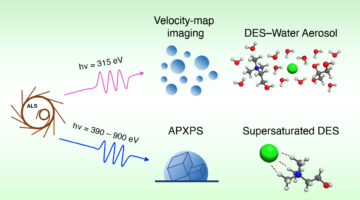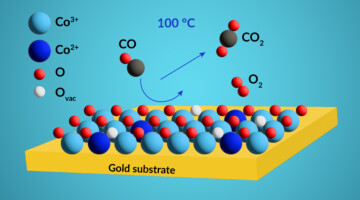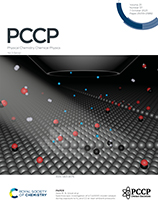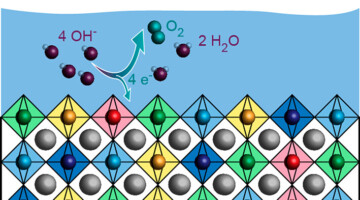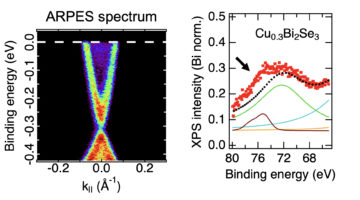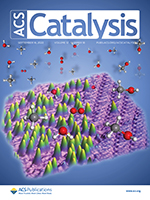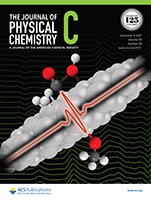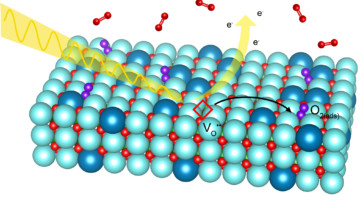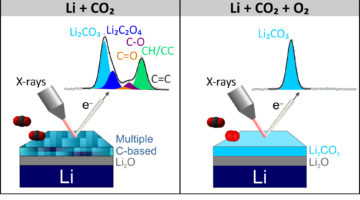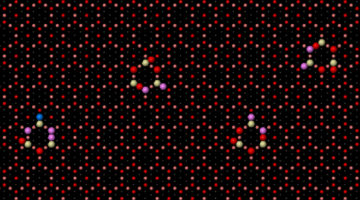Despite the ready tunability and industrial promise of deep eutectic solvents (DESs), there have been few x-ray spectroscopy studies at their liquid/vapor interfaces—which is relevant for their use in applications such as greenhouse-gas capture. Here, researchers probed the liquid/vapor interface of a benchmark DES using complementary spectroscopies. Read more »
Probing Active-Site Chemical States in a Co-Based Catalyst
Researchers identified the dominant chemical state of active sites in a cobalt-based catalyst using resonant photoemission spectroscopy under realistic conditions. The work will help scientists develop more-efficient catalysts for removing noxious carbon monoxide gas from exhaust streams generated by the burning of fossil fuels. Read more »![]()
![]()
Spectroscopic investigation of a Co(0001) model catalyst during exposure to H2 and CO at near-ambient pressures
We have performed near-ambient-pressure X-ray photoelectron spectroscopy on Co(0001) model catalysts during exposure to gases relevant to Fischer–Tropsch synthesis, i.e., CO and H2, at 0.25 mbar total pressure. At this pressure, CO seems to be more efficient at keeping the Co(0001) surface metallic than H2, which is the opposite behavior as reported in the literature for other pressure ranges. Read more »
Synergistic Effect Could Boost Production of Green Hydrogen
Researchers developed a composite material of earth-abundant elements that catalyzes the production of green hydrogen much more effectively than similar homogeneous compounds. The composite could potentially be used for efficient hydrogen generation without the need for rare and precious metals like platinum. Read more »
Copper Migrates to Surface of Topological Insulator in Air
An ambient-pressure study of a topological insulator doped with copper revealed that the copper atoms, inserted between the material’s layers, migrate to the surface when exposed to air. The work represents a novel way of modifying the material’s surface composition, which can confer it with new properties such as superconductivity. Read more »
Highly Selective Methane to Methanol Conversion on Inverse SnO2/Cu2O/Cu(111) Catalysts: Unique Properties of SnO2 Nanostructures and the Inhibition of the Direct Oxidative Combustion of Methane
Inverse catalysts generally consist of oxide nanoparticles supported on metal substrates, which can exhibit exceptional catalytic properties. The small SnO2 nanoparticles uniformly dispersed on a Cu2O/Cu(111) substrate enabled a unique SnO2–Cu2O interface that can completely convert methane to methanol directly under the environments of oxygen and water. Read more »
Direct Observation of Surface-Bound Intermediates During Methanol Oxidation on Platinum Under Alkaline Conditions
A comprehensive mechanism for the methanol oxidation reaction (MOR) in alkaline media is presented, and it is shown that the MOR proceeds via two different pathways (via COad or H3C–Oad intermediates). The latter dominates the overall MOR current, suggesting that the H3C–Oad oxidation could be a viable pathway to accelerate the MOR in alkaline systems. Read more »
Scientists Uncover a Different Facet of Fuel-Cell Chemistry
Solid oxide fuel cells are a promising technology for cleanly converting chemical energy to electrical energy. To improve the efficiency of these devices, researchers studied a model electrode material in a new way—by exposing a different facet of its crystal structure to oxygen gas at operating pressures and temperatures. Read more »
New Insights into Lithium-Metal Surface Reactions for Next-Generation Batteries
In this work, researchers studied how CO2 gas modifies the chemical composition of lithium-metal surfaces. A better understanding of the interactions between lithium and surrounding gases will help design stabilization strategies and move from lithium-ion technology to high-energy-density technologies based on lithium metal. Read more »
How Water Promotes Catalysis of Methane to Methanol
Researchers unraveled how water helps catalyze the conversion of methane, the main component of natural gas, into methanol, a liquid fuel. The work supports the efficient production of methanol and other useful chemicals and could help reduce the amount of greenhouse gases released by the flaring and venting of methane. Read more »![]()
![]()
